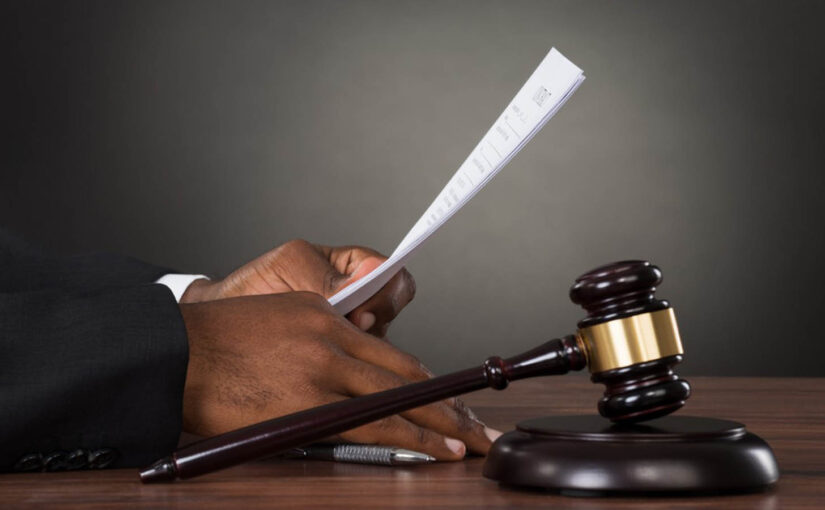Search this article on Google: In light of Section 18 of the Scheduled Castes and Scheduled Tribes (Prevention of Atrocities) Act, 1989, what limitations are placed on granting bail to individuals accused of committing offenses against members of scheduled castes and tribes?
Overview of Section 18 of the SC/ST (Prevention of Atrocities) Act, 1989
Section 18 of the Scheduled Castes and Scheduled Tribes (Prevention of Atrocities) Act, 1989 plays a critical role in safeguarding the rights of individuals belonging to scheduled castes and tribes. This provision specifically addresses the circumstances under which anticipatory bail can be denied. It serves as a protective measure that helps deter the commission of offences against members of these communities by imposing stringent consequences for perpetrators.
The Act’s robust stance on denying anticipatory bail is justified by the historical context of the systemic discrimination and violence faced by scheduled castes and tribes in India. The legislature recognized the need to provide stronger protections for these vulnerable communities, often subjected to atrocities that are not only physically violent but also seek to maintain social hierarchies and suppress their rights and dignity.
According to this section, individuals accused of committing an offence under the Act are generally not entitled to anticipatory bail. In cases where the allegations are construed to be prima facie true, the Court is not allowed to release the accused on bail. This limitation is imposed as a means to ensure the safety of the victims and their families, and to prevent the accused from tampering with evidence or influencing witnesses.
- This legal measure acts as a deterrent by limiting the possibility for accused individuals to evade the due process of law.
- It ensures immediate custodial intervention thereby preventing the accused from threatening or influencing the complainants and witnesses.
- This section empowers authorities to take swift action without the need for the victim to fear retaliation or the accused absconding the law.
The stringent restrictions on bail under Section 18 also reflect the intent to accord a sense of safety and security in the minds of the members of the SC/ST communities. It underscores the aim to address the imbalance and inequalities that have historically plagued India’s social fabric. By making it challenging for the perpetrators to receive bail, the law effectively sets a precedent that imparts the severity of such crimes and the resolve of the legal system to combat them.
Beyond the legal battlefield, it sends a broader societal message against the oppression of marginalized communities and strengthens the commitment of the Indian state towards protecting its most vulnerable citizens. The social and legal implications of Section 18 signal a step forward in the ongoing struggle for justice and equality in Indian society.
Legal Conditions for Bail under the SC/ST (Prevention of Atrocities) Act
The Scheduled Castes and Scheduled Tribes (Prevention of Atrocities) Act of 1989 prescribes specific conditions under which bail can be granted to an accused. Central to this discussion is the nature of restrictions imposed by this Act, particularly when dealing with the sensitive issue of granting bail. Under the general criminal law in India, the accused has the right to seek bail; however, the Act creates certain exceptions to this rule when the accused is charged with committing an atrocity against SC/ST individuals.
Here are the conditions under which bail may be considered within the framework of Section 18:
- Bail considerations can be made only post-arrest: Unlike anticipatory bail, which protects individuals from arrest, bail under this Act can be sought only after the accused has been taken into custody.
- Contingent on the nature of the crime: The gravity of the accusation plays a significant role. Atrocities defined under the Act are often severe, and bail might be denied if the court believes that the charges warrant such a denial.
- Evidentiary threshold: Bail may be granted if there is lack of sufficient evidence or if the court deems the charge to be weak, untrue, or motivated by ill-will.
- Judicial discretion: While the Act lays down strict guidelines, the decision to grant bail ultimately lies in the judicial discretion of the court, taking into account all circumstances of the case.
- Risk of influencing witnesses or tampering with evidence: If there exists a risk that the accused might interfere with the investigation by intimidating witnesses or tampering with evidence, bail is likely to be denied.
- Personal background of the accused: The court may evaluate the accused’s profile, including past criminal records, societal status, and the likelihood of absconding, when deliberating on the bail application.
- Impact on the community: The potential effects on the SC/ST community, including the risk of further harassment or a breach of public peace, are also important considerations for the court.
These conditions fundamentally underscore the necessity to shore up the integrity of the legal process while cognizantly balancing the rights of the accused against the collective rights of the SC/ST communities. The aim to secure justice for victims and uphold social harmony often dictates a stringent approach towards bail in such sensitive cases. Thus, while Section 18 of the Act does not completely bar the granting of bail, it significantly restricts it by imposing strict conditions, to reinforce the overarching objective of preventing atrocities against scheduled castes and tribes.
Judicial Interpretations and Limitations on Granting Bail
In interpreting the stringent provisions of Section 18, courts in India have adopted an approach that reflects the gravity of offenses under the SC/ST (Prevention of Atrocities) Act. The judicial apparatus has been tasked with the responsibility of administering these provisions while ensuring that the essence of justice is not compromised. Through various judgments, the judiciary has elucidated the limitations and the scope of discretion available to them when entertaining applications for bail within the purview of alleged atrocities against scheduled castes and scheduled tribes.
One of the critical judicial interpretations is the emphasis on prima facie assessment of the evidence available against the accused. Courts have consistently held that if the available material corroborates the allegations, granting bail would not only be against the letter of the law but also its spirit. This firm stance is premised on the need to prevent any potential for obstruction in the investigation or trial.
- The courts usually require a higher threshold of proof from the defense to demonstrate that the accusations are either unfounded, patently false, or politically or personally motivated.
- Additionally, the nature and potential repercussions of the accused being released on bail are weighed meticulously, considering aspects such as the possibility of witness intimidation, community impact, and the accused’s capacity to influence or derail the process.
- Factors such as the severity of the offense, the accused’s prior criminal record, and the likelihood of the accused fleeing from justice also play a crucial role in the bail determination process.
- Moreover, the judiciary has acknowledged the social dynamics that impede the delivery of justice in cases involving caste-based atrocities, recognizing the prevailing fear and subjugation amongst victims belonging to scheduled castes and tribes.
This interpretative stance taken by the courts ensures that the law serves as a meaningful deterrent for the perpetrators of caste-based violence and atrocity. Furthermore, the judges take into account the potentiality of community tensions and the importance of maintaining public order when making bail decisions in such sensitive matters.
Overall, the judicial prudence developed under Section 18 of the Act limits the granting of bail to ensure that justice is not just served but is seen to be served. Such jurisprudence invariably sends a signal that the state is solemnly committed to upholding the rights of the marginalized sections of society and addressing the historically entrenched injustices meted out to them.
It’s vital to note that while Section 18 forms part of a complex legal regime designed to protect SC/ST communities from discrimination and violence, it is also a manifestation of the delicate balance that the judiciary must maintain between ensuring a robust prosecution and safeguarding the civil liberties of the accused. A nuanced interpretation that accommodates the contextual realities of each case is essential for the law’s effective application, ensuring that it acts as a bulwark against the oppression of vulnerable communities while adhering to the principles of fair trial and justice.









